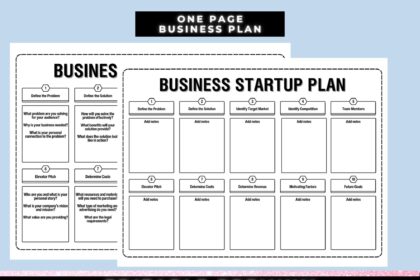Finding Harmony: Navigating the Quest for Product-Market Fit
In the dynamic landscape of entrepreneurship, the pursuit of product-market fit often resembles a delicate dance—one that requires intuition, strategy, and a touch of adaptability. It is a journey filled with anticipation and uncertainty, where innovation meets consumer needs and aspirations. As startups and established companies alike set out to find that elusive harmony between what they offer and what the market demands, understanding the nuances of this quest becomes essential. This article delves into the multifaceted process of achieving product-market fit, exploring the challenges and triumphs along the way. Join us as we navigate the rhythms of the marketplace, uncovering key insights and practical strategies to help you align your vision with the pulse of your audience.
Understanding the Foundations of Product-Market Fit
To grasp the essence of a successful product-market fit, one must first acknowledge the interplay between product offerings and consumer needs. This alignment ensures that a product not only addresses a market gap but also resonates with the target audience on an emotional level. Key components that contribute to this synergy include:
- Customer Feedback: Actively seeking and incorporating user perspectives can illuminate areas for improvement.
- Market Research: Understanding your audience’s behaviors, preferences, and pain points lays a strong foundation.
- Value Proposition: A clear and compelling value proposition can guide the development process toward meeting market demands.
Furthermore, the journey toward product-market fit requires an iterative approach. The following table outlines crucial milestones that can facilitate this process:
| Milestone | Description |
|---|---|
| Minimum Viable Product (MVP) | Launch a product with just enough features to attract early adopters. |
| User Analytics | Measure customer interactions to understand usage patterns and preferences. |
| Pivots | Be prepared to adjust your product based on user feedback and market trends. |
Recognizing these fundamental aspects will guide companies in their pursuit of creating products that not only fill a void but also foster lasting consumer relationships, ultimately leading to a thriving market presence.

Exploring Customer Needs Through Empathy and Research
Understanding customer needs is an intricate dance of empathy and research, where insights gleaned from direct interactions can profoundly shape product development. By engaging in conversations that matter, companies uncover not only what customers want, but also why they desire it. This depth of understanding is achieved through various methodologies, such as:
- Conducting in-depth interviews with target audiences
- Running surveys to quantify preferences and pain points
- Utilizing customer journey mapping to visualize experiences
Incorporating these elements into a comprehensive research strategy helps companies identify core needs and preferences that may not be immediately visible. Additionally, organizations can benefit from creating empathy maps that encapsulate the emotional and psychological aspects of their customer’s experience. Here’s a simple table illustrating key elements of empathy mapping:
| Element | Description |
|---|---|
| Say | Direct quotes and feedback from customers |
| Do | Observed actions and behaviors of customers |
| Think | Insights into customer attitudes and beliefs |
| Feel | Emotional responses connected to their experiences |

Iterative Testing: The Path to Refining Your Offering
Embracing an iterative approach to testing can illuminate the often murky waters of product development. By continuously gathering feedback at various stages, you can adapt your offering in real time, ensuring it resonates with your target audience. Each cycle of testing uncovers valuable insights, enabling you to identify what works and what doesn’t. This process not only sharpens your product but also fosters a profound understanding of your market’s evolving needs. Key strategies to consider in your iterative testing include:
- MVP Development: Roll out a minimum viable product that captures the essence of your idea, allowing for swift testing.
- User Feedback Loops: Create channels for customers to express their thoughts and experiences with your product.
- Data-Driven Decisions: Analyze qualitative and quantitative data to inform your next steps effectively.
To showcase the impact of iterative testing, consider the following simple breakdown of how tweaks to your offering can enhance customer satisfaction:
| Iteration Stage | Customer Feedback | Adaptations Made |
|---|---|---|
| Initial Release | Too complex | Simplified user interface |
| First Update | Missing features | Added essential functionalities |
| Second Update | Great usability | Enhanced performance based on usage data |
This model not only demonstrates the tangible benefits of iterative testing but also underscores the importance of staying agile in a dynamic marketplace. By cultivating a culture of experimentation, you position your product for meaningful enhancements that align with the preferences and pain points of your users.

Strategies for Sustaining Long-Term Market Alignment
Building a resilient connection with your target market requires a multidimensional approach that adapts alongside shifting consumer preferences and trends. Active market research is essential; this involves not only keeping tabs on competitors but also gathering feedback directly from customers. By leveraging tools like social listening and surveys, you can uncover insights into what truly resonates with your audience. Additionally, fostering a culture of agility within your team allows for quicker pivots when new opportunities arise, ensuring your products always meet market demands.
Another pivotal strategy is to develop partnerships that enhance your product value while expanding your customer base. Collaborating with complementary brands can introduce your offerings to a wider audience and provide integrated solutions that customers crave. On top of this, it’s crucial to invest in ongoing education—both for your team and your customers. Providing valuable content like tutorials or industry insights not only enhances the user experience but also positions your brand as a thought leader. Regularly revisiting your value proposition ensures that it remains relevant in a fast-paced market.
Insights and Conclusions
In the ever-evolving landscape of entrepreneurship, the journey toward achieving product-market fit resembles a delicate dance—one where the rhythm of innovation meets the melody of customer satisfaction. As we conclude our exploration of this intricate quest, it becomes clear that finding harmony in the marketplace is less about a destination and more about the continual process of understanding, adapting, and engaging with the needs of your audience.
The path may be fraught with obstacles, but each step brings invaluable lessons that shape not just the product, but the very foundation of a lasting business. Embrace the feedback, lean into the data, and foster relationships that elevate your understanding of the market. The quest for product-market fit is not a solitary endeavor; it thrives on collaboration, insight, and a willingness to pivot when necessary.
As you venture forth, remember that harmony is not just about aligning your product with market demand; it’s about creating a symphony that resonates with your customers. Each note—be it feedback or innovation—plays a vital role in constructing a cohesive experience. So, keep your ears attuned and your mind open; the search for product-market fit is an ongoing melody, and with each iteration, you move closer to that beautiful crescendo of success.






